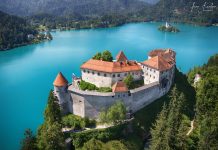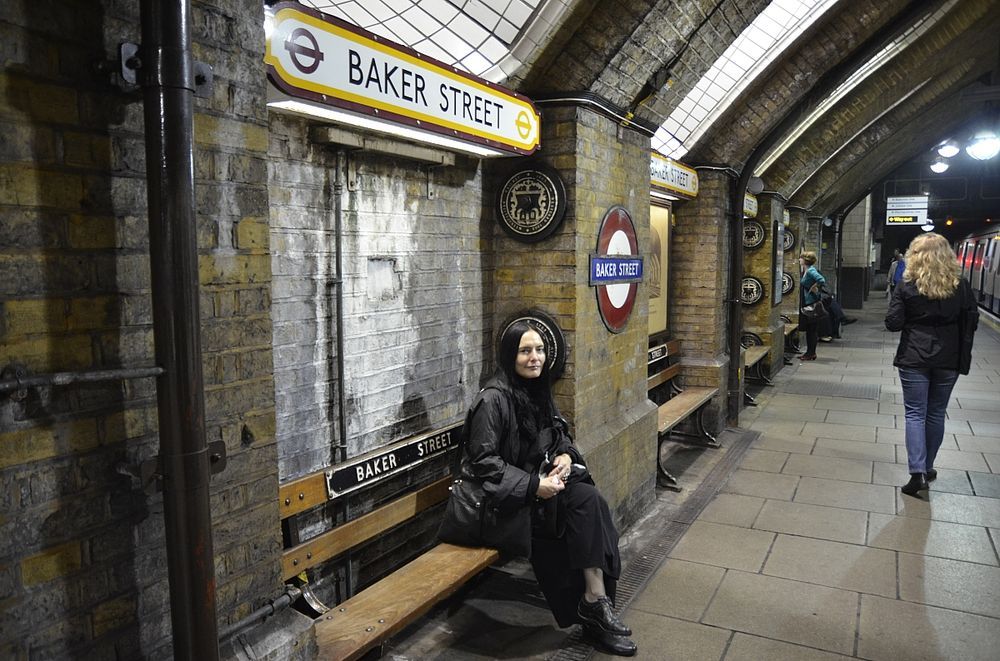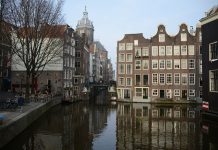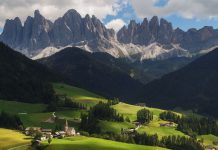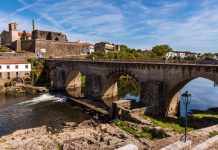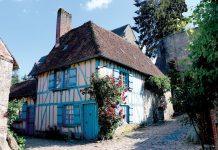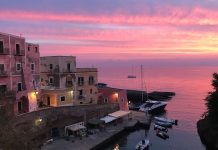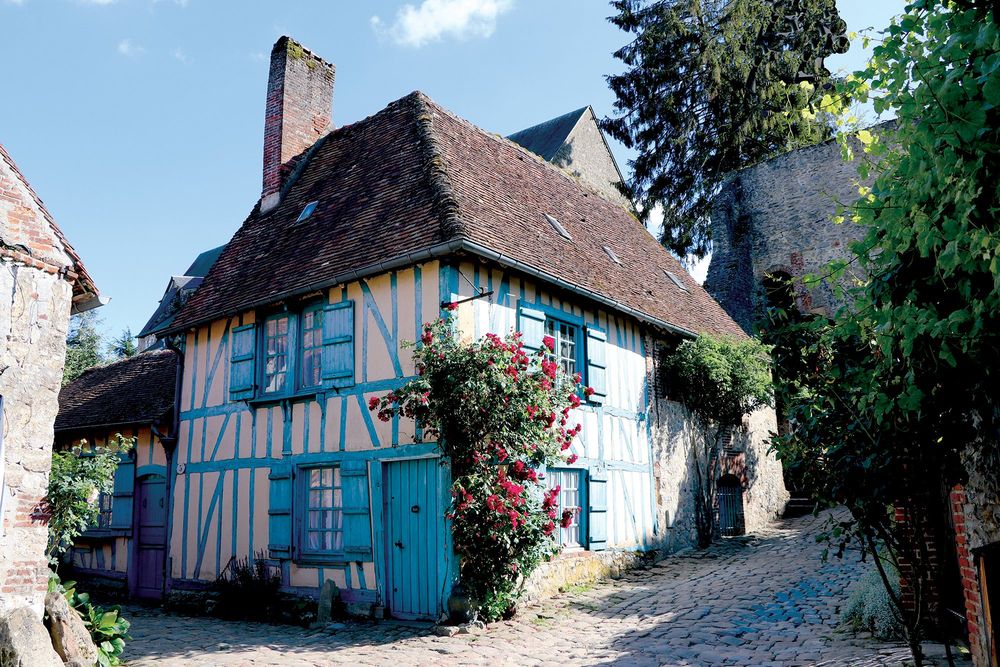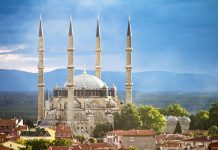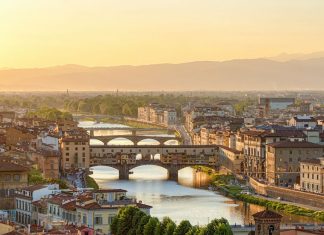France now has 159 officially recognised ‘Plus Beaux Villages’ (Most Beautiful Villages). A collection of hilltop, garden, fortress and fishing villages, they recount history, testify to French savoir-faire and offer a rich palette of architectural styles and colours. Some are very famous, while others are just as lovely in their obscurity. Explore these jewels of French heritage at your own pace…
Barfleur, Normandy
Situated on the Cotentin Peninsula and also known as the ‘Pearl of the Val de Saire’, Barfleur is a charming, picturesque fishing port that has inspired many artists. There’s nothing nicer than strolling among the coloured fishing pots and nets and watching the return of the trawlers. This is the opportunity to stop and taste the ‘blondes de Barfleur’, famous wild mussels caught in a natural environment.
For the most breathtaking view of Barfleur, head to the other side of the port. Between high and low tide, the landscape changes with the light – so the village has an ever-changing appearance, which is part of its charm.
Visitors are seduced by the granite houses with pretty facades and blue shale or gray slate roofs. The main street through the village is notably lined with these bourgeois residences. There’s the Maison Debrix with its 18th-century facade and bull’s-eye skylights. Also worth seeing is the medieval Sainte-Catherine courtyard where there’s a house from the Middle Ages, an Augustinian convent and the Saint-Nicolas church with its unique architecture and wide variety of roof styles.
Elsewhere in Barfleur, don’t miss the Gatteville lighthouse, easily reached by the promenade that runs along the coast.
Olargues, Hérault
Medieval Olargues is nestled in the Haut Languedoc Regional Natural Park, at the foot of the Caroux mountain and the Espinouse Massif. Built on a rocky outcrop, this ancient small fortified village has preserved all its charm of yesteryear with its cobbled streets, dry stone houses, covered passageways, and small squares edged with lime and cypress trees.
In this beautiful village, you can visit the old keep of the medieval chateau and its 15th-century bell tower. Another must-see is the old stately mill and the Devil’s Bridge, a beautiful listed marble bridge below Olargues. It offers a beautiful view of the Jaur river and the vineyards, cherry trees and chestnut trees that stretch out at the foot of the village. History fans will also appreciate the Church of Saint-Laurent and its organ, listed as a ‘Monument Historique’.
Numerous hiking trails crisscross the surroundings. Don’t miss the listed Peyro Escrito rock engravings.
Domme, Dordogne
South of Sarlat in the Périgord Noir, the cliff-perched village of Domme dominates the Dordogne Valley and offers a breathtaking view of the neighbouring villages (also classified as ‘Plus Beaux’) of La Roque-Gageac and Beynac-et-Cazenac.
The Bastide de Domme, with its small flowery alleyways, has architectural significance with its 17th-century market hall, coin beater’s house, Governor’s house, and beautiful doors – in particular the Porte des Tours where Templars were imprisoned and produced mysterious engravings, making this site unique.
This golden-stoned village hides another treasure, too: an incredible 450-metre-long natural cave with a profusion of colonnades, stalactites and stalagmites. It’s a wonderland for the eyes!
Coaraze, Alpes-Maritimes
Nicknamed the ‘Sun Village’ for its exceptional climate, the charming medieval village of Coaraze dominates the beautiful Paillon valley.
With winding streets, small flower-filled squares, vaulted passageways, frescoes and fountains, there’s a relaxed atmosphere as well as intrigue here. The village is full of legends. Its name – literally meaning ‘shaved tail’ – comes from a legend according to which the inhabitants once captured the devil by the tail.
Coaraze boasts beautiful buildings, some of which are listed as Historic Monuments: the Church of Saint-Jean Baptiste with its beautiful gabled facade, and the Saint-Sébastien Chapel with its remarkable frescoes. Allow time to see the Notre-Dame des Sept Douleurs chapel, too, nicknamed the Blue Chapel.
Another curiosity of the village are 12 themed sundials, which include Sunflowers by Gilbert Valentin, Blue Time by Angel Ponce de Leon and Fabulous Animals by Georges Doukine.
Gerberoy, Oise
In a bucolic setting, Gerberoy is one of France’s smallest villages. It’s also nicknamed the ‘village of a thousand roses’ thanks to Impressionist painter Henri Le Sidaner, who settled here and encouraged the residents to plant roses in front of their houses. The result is magical and the village resembles an artist’s palette of exploding colours, with not only roses but also wisteria, hollyhocks and hydrangeas.
Cob houses from the 17th and 18th centuries with coloured timber frames line the cobbled streets and give this beautiful village a very picture-postcard appearance. In addition to the beautiful terraced gardens of Le Sidaner (listed as Remarkable), you can visit the Collegiate Church of Saint-Pierre (listed as a Historic Monument) and the pretty blue house and ramparts of the Charlemagne tower. The vineyard on the heights of the village is one of the smallest in France.
Camon, Ariège
As well as having another association with roses, this village is also known as ‘the little Carcassonne’ and nestles in the Hers valley. You enter through the old vaulted door of the church, as Camon is centred around its 10th-century Benedictine abbey. Among the must-see structures are the Porte de l’Horloge, the ramparts, the Maison Haute, the 16th-century church, the abbey-chateau and the Maison des Pénitents Blancs (White Penitents’ House) with its facade of theological symbols.
As in Gerberoy, the rose is the queen of flowers here. The streets are fragrant and bursting with colour and climbing roses adorn every facade. Every year on the third Sunday of May, the inevitable rose festival is a real institution in Camon. You must also visit the main village roseraie and rose garden too.
Another point of interest: the hillsides of Camon, where vines were once grown. Take to the hiking trail that weaves around the dry stone huts and learn the viticultural heritage of the village.
While we’re on the subject of roses…
In addition to Gerberoy and Camon, there are other ‘Plus Beaux Villages’ in France that are a real paradise for flower lovers.
Grignan (Drôme Provençale): its collection of old and English roses has earned it the title of ‘Village Botanique’.
La Romieu (Gers): over 500 rose bushes adorn the streets of the village and the classified Coursiana Gardens are a must.
Sauveterre-de-Rouergue (Aveyron): at the foot of the magnificent Saint-Christophe collegiate church, a rose garden illuminates the old cemetery with a thousand colours.
Veules-les-Roses (Seine-Maritime): wedged between land and sea, this small Norman village draws visitors with its half-timbered houses, mills, green-banked river and profusion of flowers in the pretty alleyways.

